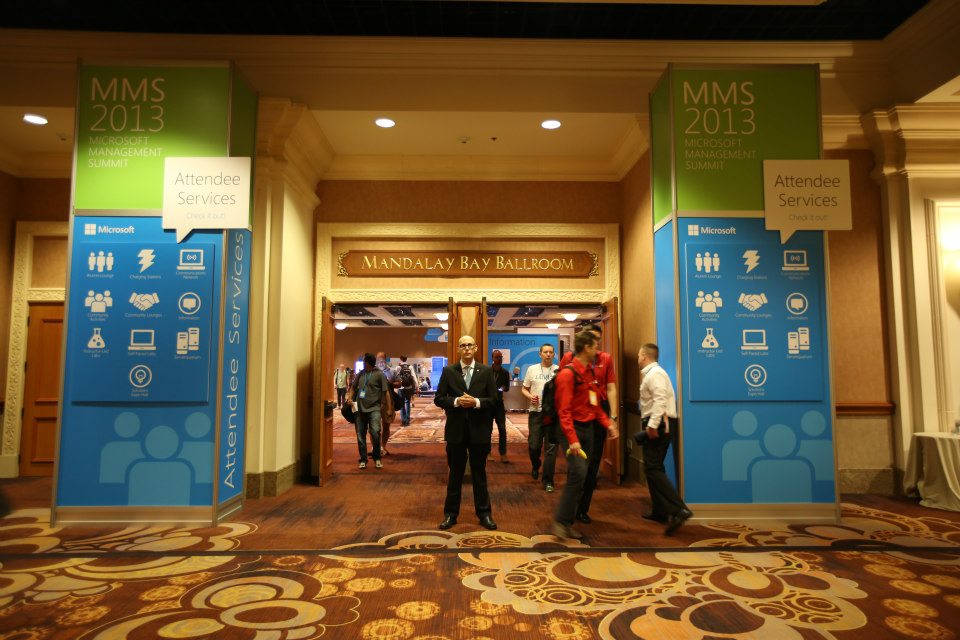2013 Microsoft Management Summit
Attending Microsoft Management Summit (MMS) presents the opportunity to speak with system admins, DBAs, IT operations, upper management and more about the benefits that taking a unified approach to automation can deliver to datacenter, runbook or IT operational processes.
On the one side you have workload automation, which can trace its roots back to mainframe batch scheduling and has since moved to the forefront as a backbone for most of today’s mission-critical IT projects. It’s more important than ever in automating the underlying IT processes that directly support the business, i.e. passing data and managing dependencies between critical business applications, automating data warehousing/BI processes and more.
On the other side you have IT process automation…aka runbook automation and IT operational processes…that many of the System Center constituency here at MMS is predominately concerned about. Typically IT operations will handle the automation of processes such as provisioning virtual resources, machine configuration, incident management, change and release management functions, etc. with their own, “point” automation tools. The problem is when the departmental boundaries cross and business processes and IT operational processes become co-dependent on each other, taking an “elemental” approach to IT automation with these “point” automation tools builds boundaries to unifying and automating across process types.
This is exactly the reason why today we announced new two-way integration between ActiveBatch and Microsoft’s System Center Orchestrator. As recent conversations with analysts and customers have confirmed, no automation vendor will be able to provide a one-stop automation solution for everything IT. As EMA analyst Torsten Volk recently highlighted in a blog post, while it might be ideal in certain organizations to consolidate all automation disciplines into one centrally governed unit, it’s not always feasible. The onus is on the automation vendors to provide the functional flexibility to integrate if an IT organization so desires.
ActiveBatch’s strengths lie on the workload/business process automation side; Orchestrator on the IT operational side. By taking this architectural approach we’re unifying multiple automation solutions, and in the process, eliminating the need to integrate process types with scripting or manual handoffs and flag waving and increasing productivity by reducing the time spent jumping between disparate automation solutions.
An Architectural Approach to IT Automation
For the IT professionals at this year’s Microsoft Management Summit, we’re clearly seeing this “architectural” approach extend across all elements of their IT organization, both Microsoft and non-Microsoft, process types, scripting languages, applications and more:
- Conversations underscored the need to extend runbook automation beyond the datacenter and IT Operations with workload automation. While many attendees stated that System Center is the dominant solution within the IT operations arena, they’re still facing the challenges associated with managing a heterogeneous IT environment, including the ability to automate Oracle EBS, Dynamics AX, SAP environments and various data warehousing and ETL solutions using a solution such as ActiveBatch.
- Many system administrators expressed interest in the ability to automate what we’d call the “administrative” functions associated with their jobs, such as managing SharePoint, Exchange and Active Directory tasks and processes. For example, the ability to create, modify and manage Active Directory objects automatically based on an IT or business event, such as HR uploading a new-hire form to a network drive, meant being able to more dynamically assign and enforce security policies while saving themselves the manual labor of doing these chores themselves.
- PowerShell is Microsoft’s task automation framework, but the ability to use workload automation as a framework to encapsulate PowerShell scripts resonated with attendees who wanted a central point of control and monitoring for their scripts and who wanted to be able to trigger these scripts based on an IT event, such as a database or network location being updated or an email or FTP being received. And while PowerShell works great, the ability to reduce IT operations’ reliance on scripting and replace it with production-ready job scheduling is a question of productivity and reliability.
- Windows Task Scheduler and SQL Server Agent remains a stalwart automation tool within Microsoft environments, but nearly every attendee identified the static nature of date/time scheduling and the need to supersede it by automating business and IT processes in real-time.

